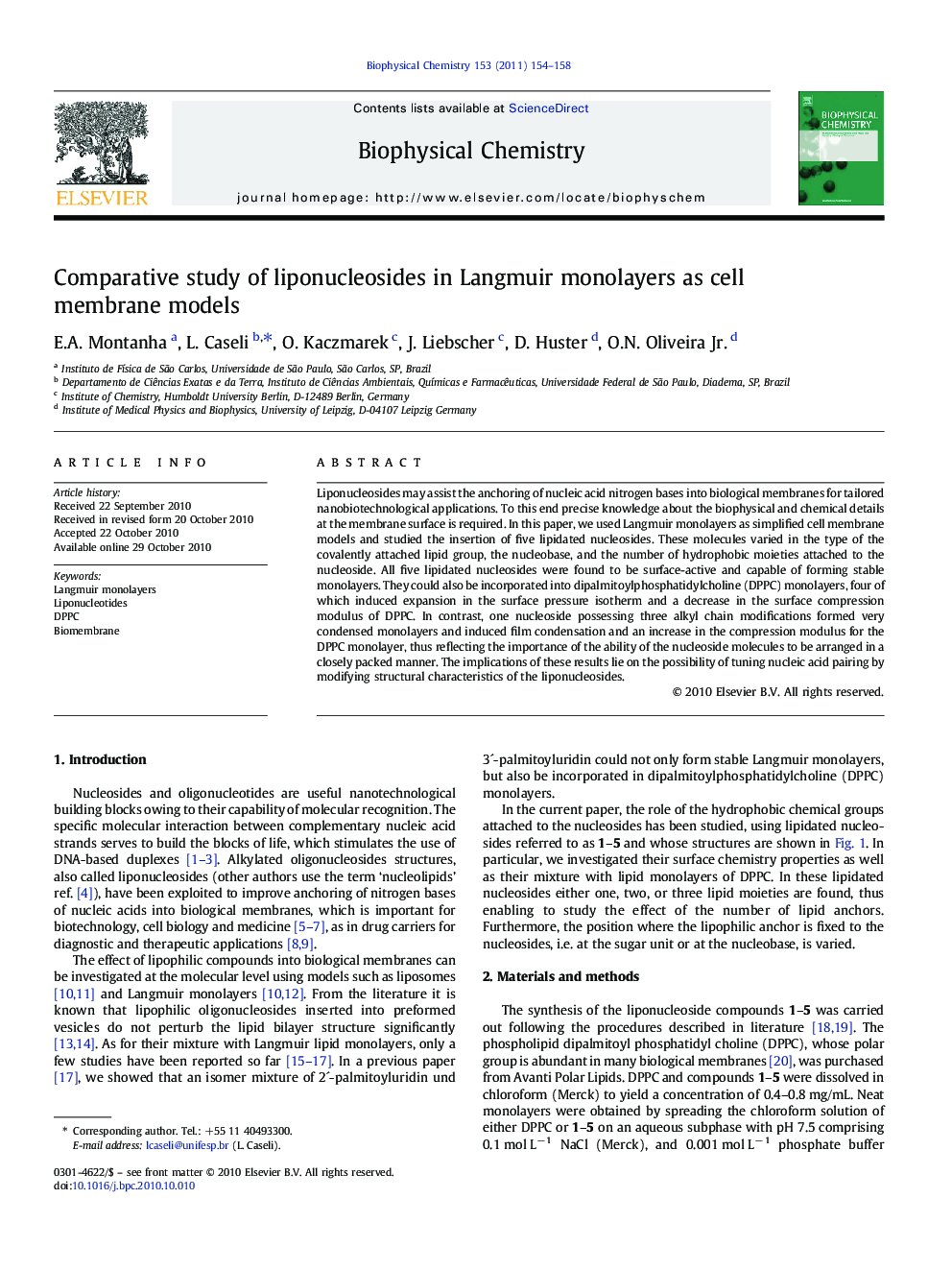| Article ID | Journal | Published Year | Pages | File Type |
|---|---|---|---|---|
| 5371514 | Biophysical Chemistry | 2011 | 5 Pages |
Liponucleosides may assist the anchoring of nucleic acid nitrogen bases into biological membranes for tailored nanobiotechnological applications. To this end precise knowledge about the biophysical and chemical details at the membrane surface is required. In this paper, we used Langmuir monolayers as simplified cell membrane models and studied the insertion of five lipidated nucleosides. These molecules varied in the type of the covalently attached lipid group, the nucleobase, and the number of hydrophobic moieties attached to the nucleoside. All five lipidated nucleosides were found to be surface-active and capable of forming stable monolayers. They could also be incorporated into dipalmitoylphosphatidylcholine (DPPC) monolayers, four of which induced expansion in the surface pressure isotherm and a decrease in the surface compression modulus of DPPC. In contrast, one nucleoside possessing three alkyl chain modifications formed very condensed monolayers and induced film condensation and an increase in the compression modulus for the DPPC monolayer, thus reflecting the importance of the ability of the nucleoside molecules to be arranged in a closely packed manner. The implications of these results lie on the possibility of tuning nucleic acid pairing by modifying structural characteristics of the liponucleosides.
Graphical AbstractDownload full-size imageResearch Highlights⺠Liphophilic nucleoside spread on the air-water interface. ⺠Formation of a stable Langmuir monolayer. ⺠Nuceloside co-spread with DPPC at the interface.
